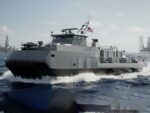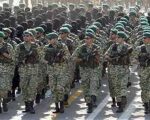Indonesia’s defense cooperation with South Korea took another step forward as its second test pilot successfully flew the KF-21 Boramae advanced multirole fighter in South Korea. The sortie marks a key milestone in Jakarta’s participation in the joint next-generation fighter program and underscores growing bilateral aerospace ties.
Second Indonesian Pilot Takes Front Seat in KF-21
On October 25, 2025 (local time), an Indonesian Air Force (TNI-AU) test pilot conducted a front-seat flight aboard a KF-21 prototype at the Republic of Korea Air Force’s (ROKAF) Sacheon Air Base. This is the second Indonesian pilot to fly the aircraft after an earlier back-seat familiarization flight by another officer. The pilot reportedly executed basic flight maneuvers to validate handling qualities and control responsiveness.
The sortie was conducted under close supervision by Korean Aerospace Industries (KAI) and ROKAF test teams as part of ongoing bilateral flight evaluation activities. According to KAI officials cited by Yonhap News Agency and other Korean defense outlets, the Indonesian pilot praised the aircraft’s stability and ergonomics during post-flight debriefing.
Indonesia’s Stake in KF-X Program Reaffirmed
The successful front-seat flight comes amid renewed signs of Jakarta reaffirming its commitment to the $7.8 billion KF-X program—South Korea’s flagship indigenous fighter development effort aimed at producing a stealth-capable 4.5-generation multirole aircraft. Indonesia joined as a junior partner in 2010 under a cost-sharing agreement that initially saw it pledge to cover approximately 20% of development costs.
However, Indonesia has been behind on payments for several years due to fiscal constraints and shifting priorities within its defense budget. As of late 2023, reports indicated Indonesia had paid only around $227 million of its $1.3 billion share. Despite this lag, recent developments—including sending more engineers to KAI and now deploying operational pilots for test flights—suggest Jakarta remains invested politically and technically.
KAI officials have stated that Indonesia has resumed partial payments and continues negotiations over technology transfer terms for eventual local assembly or production under PT Dirgantara Indonesia (PTDI). The presence of Indonesian pilots at Sacheon is seen as both symbolic and practical validation of continued partnership.
KF-21 Flight Testing Progresses Toward IOC
The KF-21 Boramae (“Hawk”) first flew on July 19, 2022. Since then, six prototypes have accumulated over 300 sorties across various envelope expansion tests including supersonic trials (Mach >1), weapons separation tests with dummy AIM-2000 IRIS-T missiles, aerial refueling dry contacts with KC-330 tankers, and environmental durability assessments.
The aircraft features radar cross-section reduction shaping but lacks internal weapons bays—placing it between Gen4+ fighters like F/A-18E/F Super Hornet or Rafale and true fifth-gen platforms like F-35A. It employs an AESA radar developed by Hanwha Systems with LIG Nex1 providing EW systems integration. Powerplant is twin GE F414-GE-400 engines under license.
- Length: ~16.9 m
- Wingspan: ~11.2 m
- Max speed: Mach ~1.8
- Combat radius: ~1,000 km
- Hardpoints: up to ten external stations
- AESA radar range estimated at >100 km against fighter-sized targets
KAI aims for Initial Operational Capability (IOC) by mid-to-late 2026 for ROKAF Block I variants configured primarily for air-to-air roles using IRIS-T missiles and future integration of Meteor BVRAAMs via MBDA cooperation.
Strategic Implications for Southeast Asia
If fully realized through co-production or licensed assembly via PTDI in Bandung, Indonesia could become Southeast Asia’s first operator of an indigenous stealth-capable fighter platform—significantly enhancing its regional airpower posture vis-à-vis neighbors operating older F-16s or Su-family jets.
KF-21 acquisition would also reduce dependency on U.S.-based Foreign Military Sales (FMS) channels while building sovereign aerospace capacity through technology transfer—a long-standing goal under Jakarta’s Minimum Essential Force roadmap through the late 2020s.
The presence of TNI-AU pilots participating directly in developmental testing not only builds familiarity but may also shape future tactics tailored to Indonesian airspace conditions—including maritime strike profiles across archipelagic terrain where low-observable characteristics provide tactical advantage.
Bilateral Aerospace Cooperation Expands Beyond Fighters
The KF-X partnership is part of broader South Korea–Indonesia defense industrial cooperation spanning submarines (Nagapasa-class based on DSME Type-209), naval systems integration via Hanwha Ocean/DSME support contracts, and potential rotorcraft collaboration involving Surion KUH derivatives for utility roles within TNI branches.
In aerospace specifically:
- KAI has expressed interest in supporting PTDI with MRO capabilities for KT-1B Woongbi trainers already operated by TNI-AU;
- A cooperative roadmap may include UAV technologies leveraging KAI’s NI-X platform experience;
- Joint R&D frameworks are being explored under ASEAN-Korea defense dialogues aimed at regional defense ecosystem growth.
The recent test flight thus fits into a larger pattern of strategic alignment between Seoul and Jakarta—where shared industrial goals meet mutual security interests amid rising great power competition across Indo-Pacific airspace corridors.
Outlook: From Prototype Flights to Operational Partnership?
The second Indonesian pilot’s successful front-seat sortie signals more than just technical progress—it reflects political will from both sides to sustain momentum despite past financial turbulence. For KAI, it validates export ambitions beyond Latin America or Middle East clients; for Indonesia it offers path toward greater aerospace sovereignty without full dependence on Western OEMs.
If Jakarta follows through with resumed funding flows—and if local production rights are finalized—the first operational squadron deliveries could enter service post–2028 depending on Block II timelines incorporating full multirole capability including precision-guided munitions integration such as JDAMs or ALCMs currently under Korean development pipelines.
This milestone also sets precedent for other emerging economies seeking co-development models rather than off-the-shelf purchases—a trend that may reshape global fighter markets over the next decade as legacy platforms age out across Asia-Pacific fleets.









